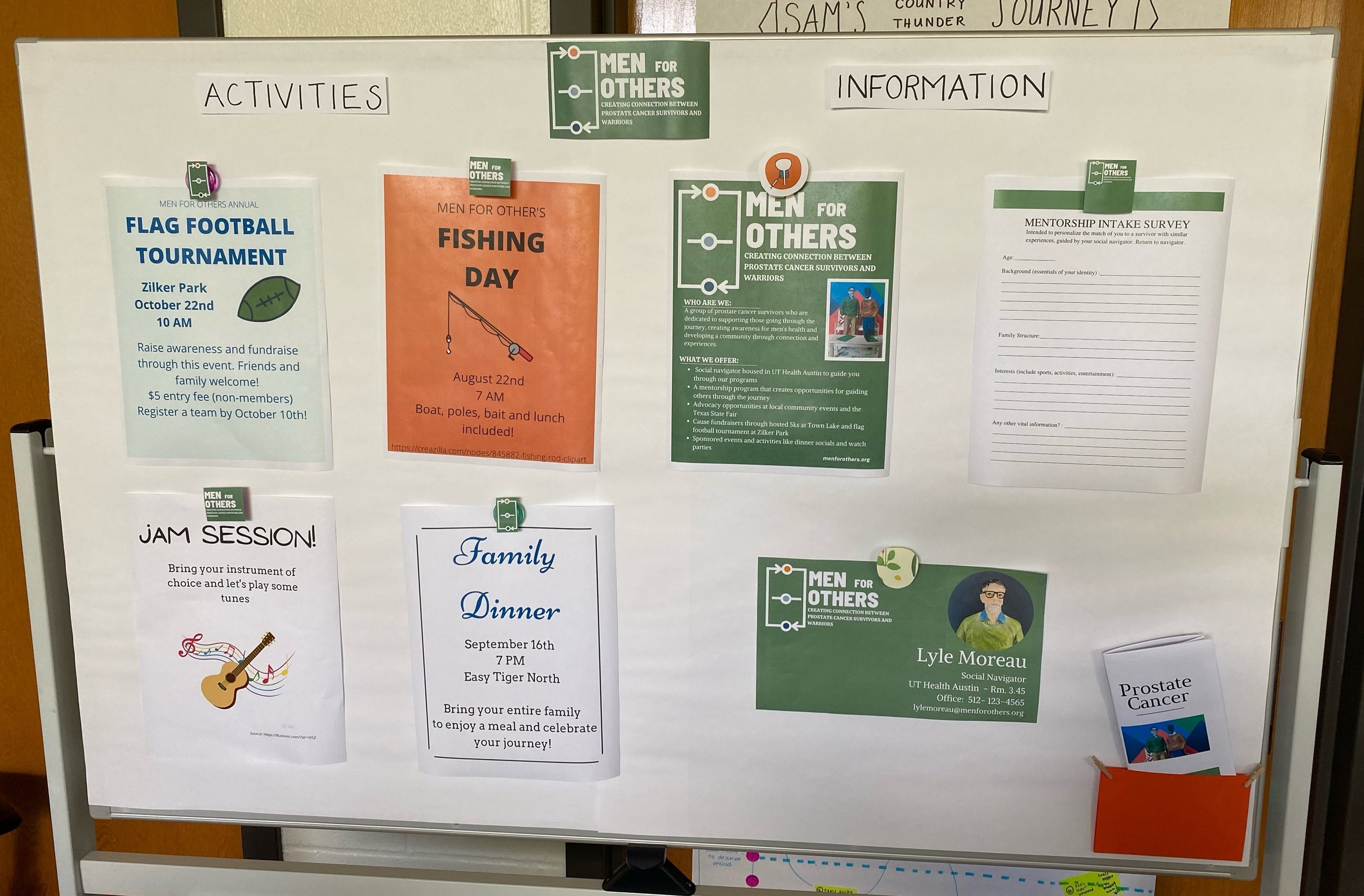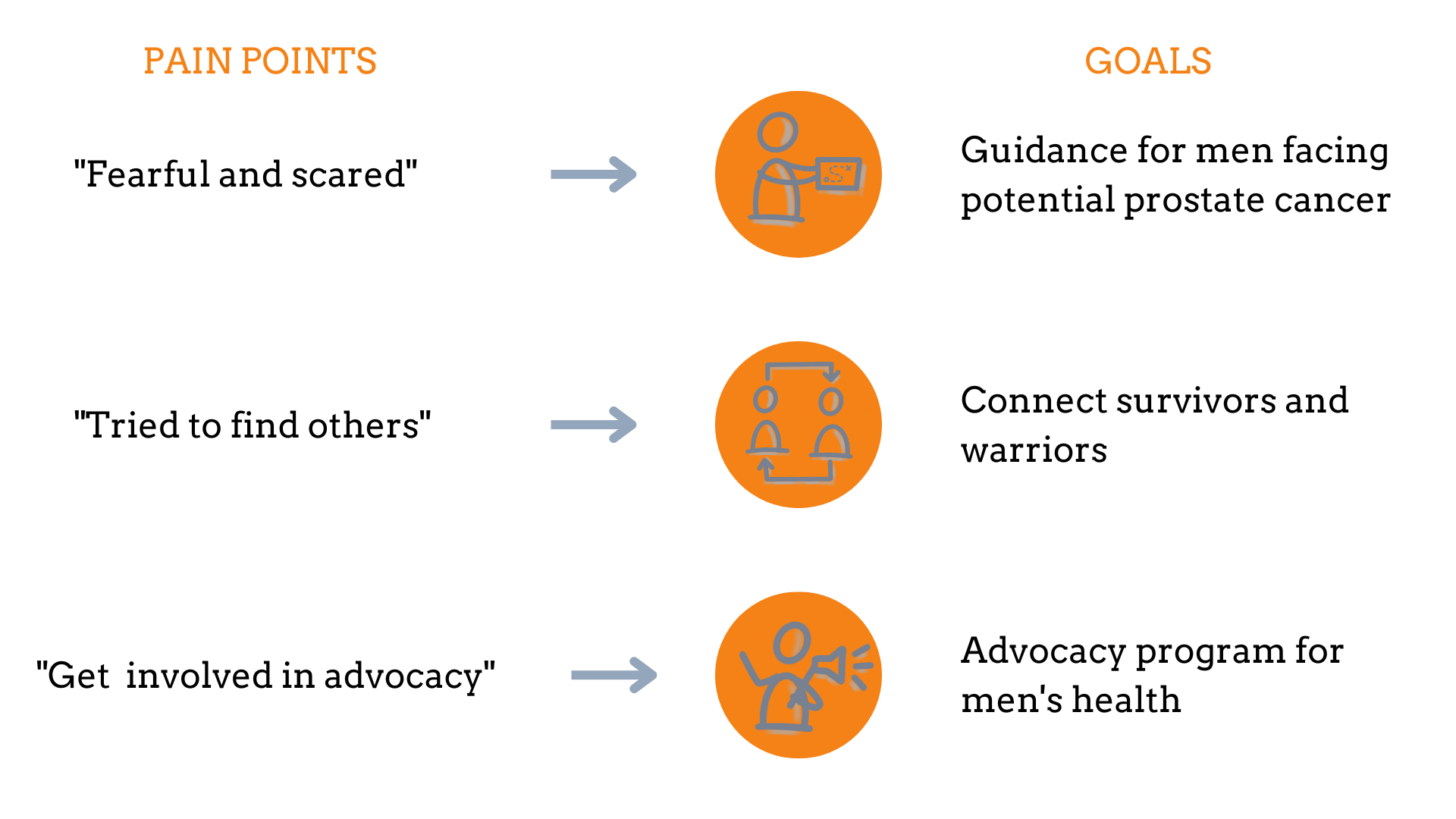Men for Others
When prompted with how we can aid in social wellness through creating a service in 6 days, myself and my teammates went out interviewed many different potential users about the topic of social wellness. Lyle's story of his prostate cancer journey stuck out to us:
“I was fearful and scared of dying soon.”
“I tried to find other men who underwent similar situations. ”
“After my diagnosis, I wanted to get involved in advocacy to help others.”
Making connections was a critical part of Lyle’s journey. So our team decided to develop ideas around improving the social journey of going through prostate cancer, keeping Lyle in mind and hoping the ideas we landed on would be helpful beyond Lyle.
We thought:
It would be game changing if a cancer journey was a catalyst for social connection instead of a barrier.
So we asked ourselves:
How might we lower the activation energy of social connection during the cancer journey?
with Claire Moreau, Veronica Remmert and Mara Flock
My Role:
Research
Synthesis
Ideation
Prototyping and Development
From the pain points we identified in Lyle’s interviews, we made goals to tackle them head on in relation to our “how might we” question:
We brainstormed around Lyle's pain points, the goals we drew from that and our "How Might We" question. From there, we brainstormed in volume. Based on what we thought might succeed and bring joy, we narrowed down potential solutions to expand and integrate with each other. We began asking potential users, those who might encounter prostate cancer, what they thought of every piece of every potential prototype. Through feedback, we were able to merge ideas through creating Men for Others.
We developed scenes to represent interactions that would take place through the umbrella organization, Men for Others. A larger part of our solution was creating the role of the social navigator. As someone who is housed in the hospital, the social navigator would be there for the person encountering prostate cancer, guiding them through what the organization has to offer: a mentorship program, advocacy opportunities and activities sponsored by Men for Others. Scenes we created to try and understand how interactions would go between doctor, social navigator and warrior.
We also mocked up how we thought certain tools the social navigator could use would look like. This included an information kit in the form of a leather bound portfolio which included a mentorship intake survey, a flyer for the organization, pamphlet about prostate cancer and a business card. We also mocked up a bulletin board that would go in the social navigator's office in the hospital that would have additional information and events listed.








